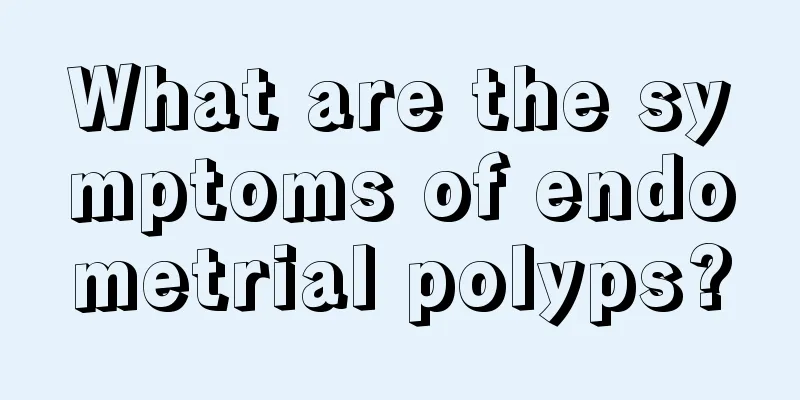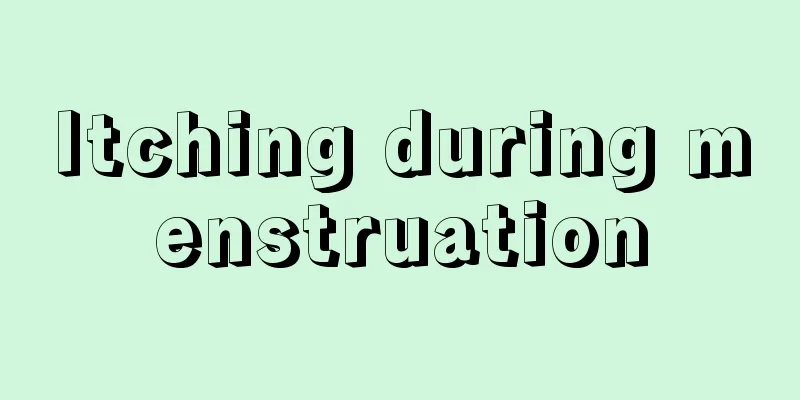What are the symptoms of endometrial polyps?

|
A woman's uterus carries a lot of hope, such as bearing a child, and a woman can only be considered a real woman if she has a uterus. However, the uterus can be affected by various harmful factors, and uterine diseases such as endometrial polyps may occur. The manifestations of the disease are different, and diagnosis is also extremely difficult. Scientific B-ultrasound examinations must be performed. However, before the examination, you must know the symptoms of physical discomfort for comparison. So what are the symptoms and examination methods of endometrial polyps? This disease can occur at any age after puberty, but is more common in women over 35 years old. When polyps are very small, patients do not have any discomfort symptoms. Most of the time, they are discovered during gynecological examinations due to other diseases. 1. Irregular menstruation Patients with multiple diffuse type often have menorrhagia and prolonged menstruation, which are related to the increase in endometrial area and excessive endometrial hyperplasia. 2. Abnormal leucorrhea A small number of larger polyps will show increased leucorrhea, or a few traces of blood in the center of the leucorrhea, or even a small amount of vaginal bleeding, that is, bloody leucorrhea or contact bleeding, which is especially easy to bleed after sexual intercourse and when squatting and straining to defecate. 3. Irregular bleeding, etc. Large polyps or polyps that protrude into the cervical canal are prone to secondary infection and necrosis, causing irregular bleeding and foul-smelling bloody secretions. Hysteroscopic examination shows that endometrial polyps mostly occur at the bottom of the uterus, are the size of a little finger, are fat or pink in color, and are translucent. When pressure is applied to the uterus, the polyp trembles but does not fall off. A biopsy can be taken at this time to confirm the diagnosis. Inspection method: 1. Gynecological examination Acute inflammation may cause cervical congestion, edema, or erosion, with purulent secretions discharged from the cervical canal, and there may be pain when the cervix is touched. If it is cervical erosion or polyp, there may be contact bleeding. 2. Microscopic examination Endometrial polyps are composed of the endometrium, covered with a layer of cuboidal epithelium or low columnar epithelium. The middle part of the polyp forms a fibrous longitudinal axis, which contains blood vessels. 3. Cervical Smear Shows Papanicolaou grade II. 4. Cervical biopsy For patients with more serious conditions, a cervical biopsy can be performed to confirm the diagnosis. The pathological diagnostic criteria for malignant transformation of polyps are: ① The entire morphology of the polyp must be seen; ② The malignant transformation is limited to the polyp; ③ There is no cancerous transformation in the inner membrane around the polyp. Care should be taken to differentiate it from endometrial adenocarcinoma which presents a polyp-like growth. 5. Hysteroscopy Hospitals are increasingly using hysteroscopy for diagnosis. The hysteroscope can observe the uterine cavity directly, which is intuitive and clear. After excluding malignant lesions in the uterine cavity such as endometrial cancer, single, small endometrial polyps can be removed directly under the direct vision of the hysteroscope. The symptoms and examination methods of endometrial polyps are explained in the article. This disease can be preliminarily diagnosed based on the symptoms to indicate that there is a problem with the body. The patient needs further examination and diagnosis, and the patient's examination is arranged according to the physical symptoms. Generally, B-ultrasound or microscopic examination will be performed. If the endometrial polyp is serious, a biopsy will be performed. This is to confirm the lesions of the polyp and prevent the occurrence of cancer. |
<<: What are the causes and prevention methods of endometrial polyps?
>>: How to treat endometrial polyps after B-ultrasound examination
Recommend
What does occult blood mean for women?
Occult blood is a medical term, mainly referring ...
Why do gout attacks become more frequent after starting to lower uric acid?
Nowadays, people’s lifestyle and diet are relativ...
Why does a girl's lower abdomen hurt on the left side?
If a girl has pain on the left side of her lower ...
The dangers of premature menopause
Menopause is something every woman has to go thro...
Mood changes during early pregnancy
In the early stages of pregnancy, the hormones in...
How to delay menstruation
Menstruation is an important part of women's ...
Vegetables and fruits, which one has a higher vitamin C content? The truth is heartbreaking!
gossip: The vitamin C content of fruits is higher...
What is the hairy part of a woman's lower body called?
The female body structure is very complex, especi...
It's too tight down there. I can't get in.
The main function of a woman's vagina is to c...
Soaking your feet in ginger water regularly has five major benefits and effects!
Foot soaking is one of the most effective ways to...
Will ovulation occur if the follicles are not developing properly?
Poor follicular development is actually a manifes...
Eight common menstrual problems for women that you should know
Question 1: At what age is menarche considered no...
Can I eat seasoning during confinement?
After a pregnant woman gives birth to a baby, the...
What are the disadvantages of using vaginal tightening sticks for women?
A woman's tight vagina will make her sex life...
Sleeping an extra hour a day can help you lose 20 pounds! Has a completely painless way to lose weight been found?
Reviewer of this article: Chen Haixu, Deputy Dire...









